Research at Gorongosa
Gorongosa is an exciting place for scientific research. World renowned scientists from across the globe are coming to study Gorongosa’s uniquely diverse wildlife, plants, and ecosystems.
Research at Gorongosa
The Department of Scientific Services supports integrative research to advance biodiversity science, organismal biology, primatology, paleontology, ecology, and conservation. Our work contributes to meeting research objectives outlined in the long-term agreement between the Government of Mozambique and the Carr Foundation. Our projects are long-term in nature, allowing us to address topics that range from documenting the biodiversity of Gorongosa National Park to describing coevolution between bats and their prey to uncovering the historical ecosystems of Gorongosa to understanding the ecological dynamics and restoration of the park’s present ecosystems. Research in Gorongosa provides a platform for training students and is highly collaborative.
Comprehensive biodiversity documentation
Nature conservation is most effective if it is based on an in-depth understanding of its targets. For this reason, the E.O. Wilson Biodiversity Laboratory has been conducting a comprehensive documentation of all species of multicellular organisms found in the Greater Gorongosa Ecosystem and the intricate relationships among them. Since 2013 we have been systematically surveying all major landscapes of Gorongosa and building a database that allows us to understand our species richness, their taxonomic diversity, distribution, and seasonality. Based on ca. 143,000 individual observations of over 6,700 species of animals and plants, we have been able to identify areas of particular importance for conservation, including areas of endemism and hotspots of species richness. We have also discovered over 100 species new to science and many species of conservation concern. Specimens collected during our surveys are part of the Gorongosa Synoptic Collection, a valuable repository of genetic and taxonomic diversity that is used daily by researchers and students working in the park to answer questions about our complex ecosystem.
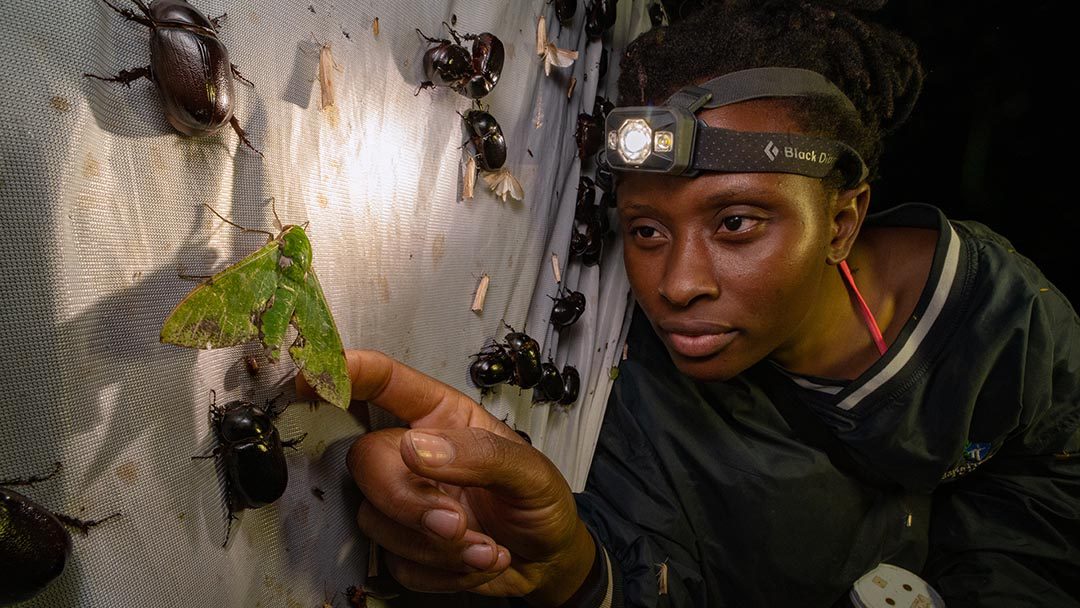
Wilson Lab scientist Norina Vicente collecting insect specimens during a biodiversity survey. These specimens become part of the Gorongosa Synoptic Collection, a valuable repository of the genetic diversity of the park. – Photographer – Piotr Naskrecki
Diversity and behavior of acoustic animals
The world of acoustic animals, especially those that use sounds beyond the human ability to hear is still poorly understood but rich in interesting and unexpected interactions. In the Wilson Lab we focus on two groups in particular, insects and bats, and the intricate relationships among them. We are studying the diversity of katydids, grasshoppers, and their allies, and documenting the wide range of their acoustic behaviors. We have also built a library of ultrasonic calls of nearly 50 species of Gorongosa bats that we now use to identify them in the field. We conduct observations and experiments on bat-insect interactions, and the evolution of behavioral strategies that insects use to defend themselves against bat predation. In our newly created Bat Laboratory we plan to start a project to identify the context of bat social calls and conduct a series of experiments on the hunting strategies of bats.
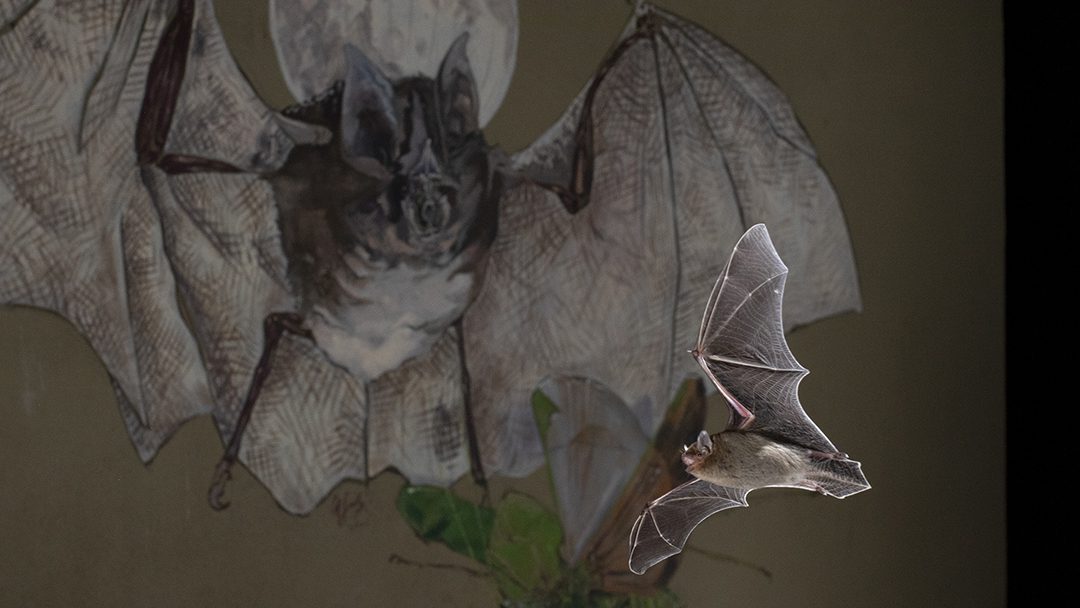
A Banana bat (Afronycteris nana) passing in front of the Wilson Lab, where research on bat biology and classification is being conducted. – Photographer – Piotr Naskrecki
Long-term monitoring of the recovery of large mammal populations
Wildlife numbers have fluctuated dramatically over the course of the 60 year existence of Gorongosa National Park. Historical aerial counts of the large wildlife started in 1969. A fixed-wing aircraft was used. From 1972, a long hiatus occurred as a consequence of the civil war. The first post-war survey took place in 1994 formally documenting the decimation of the large wildlife. Another fixed-wing count was done in 1997. From the year 2000 onwards, a helicopter was used to document the recovery of animal numbers. Since 2012, a biennial aerial wildlife count has been undertaken. The core part of the Park is covered in its entirety whereas the eastern and western shoulders of the Rift Valley are surveyed using sample lines. Data are now available for a total of 16 aerial counts. All observations are georeferenced. The database contains 94,609 entries.
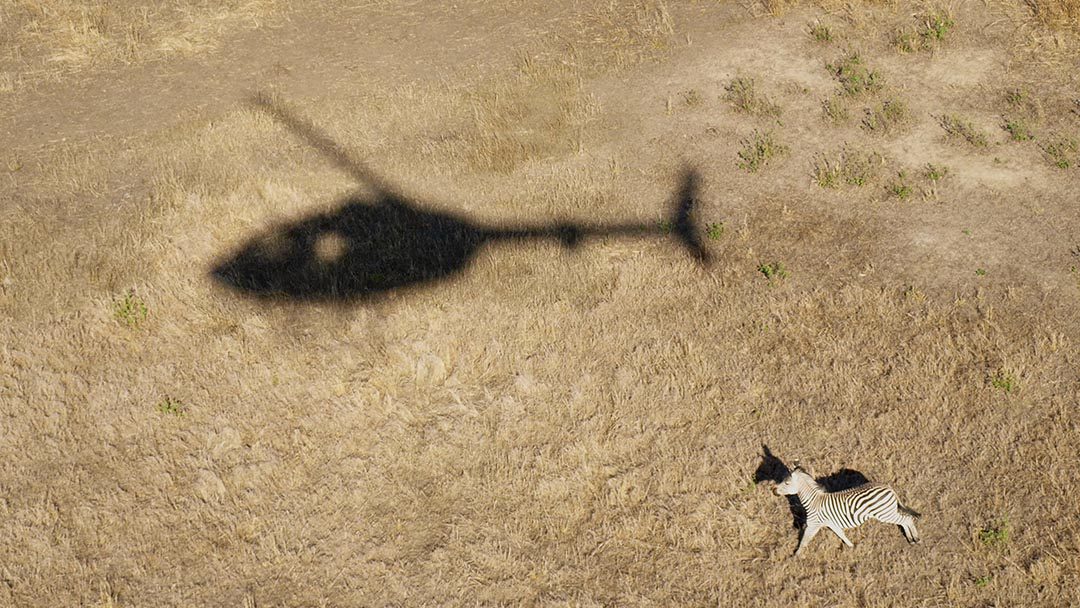
Wildlife monitoring, Gorongosa National Park Mozambique – Photographer Norina Vicente
Gorongosa Savanna Ecology Project
This large-scale experiment was initiated in 2021 to determine the role of fire and large mammals, two major drivers of savannas, in shaping the diversity and structure of these ecosystems. We are manipulating the presence of large mammals through exclosures and testing the effects of early and late season fires on everything from soils to vegetation to insects, reptiles, and mammals. This project has been the source of multiple Gorongosa Master’s in Conservation Biology theses and will continue to address long-standing questions in savanna ecology for years to come.

Gorongosa Savanna Ecology Project – photographer Dr. Tara Massad
Mt. Gorongosa Ecological Reforestation Project
Forest restoration is critical for biodiversity and climate change mitigation. Developing reforestation methods based on ecological principles is therefore necessary for conservation. We are applying principles of chemical ecology to reforestation on Mt. Gorongosa, a highly diverse and threatened section of Gorongosa National Park. As insect herbivores can limit seedling growth, we are planting a diversity of species differing in their phytochemical and physical anti-herbivore defenses. This project will continue for many years and will illustrate the value of considering plant defenses when designing reforestation programs. This project has already formed the basis of one master’s thesis [LINK].
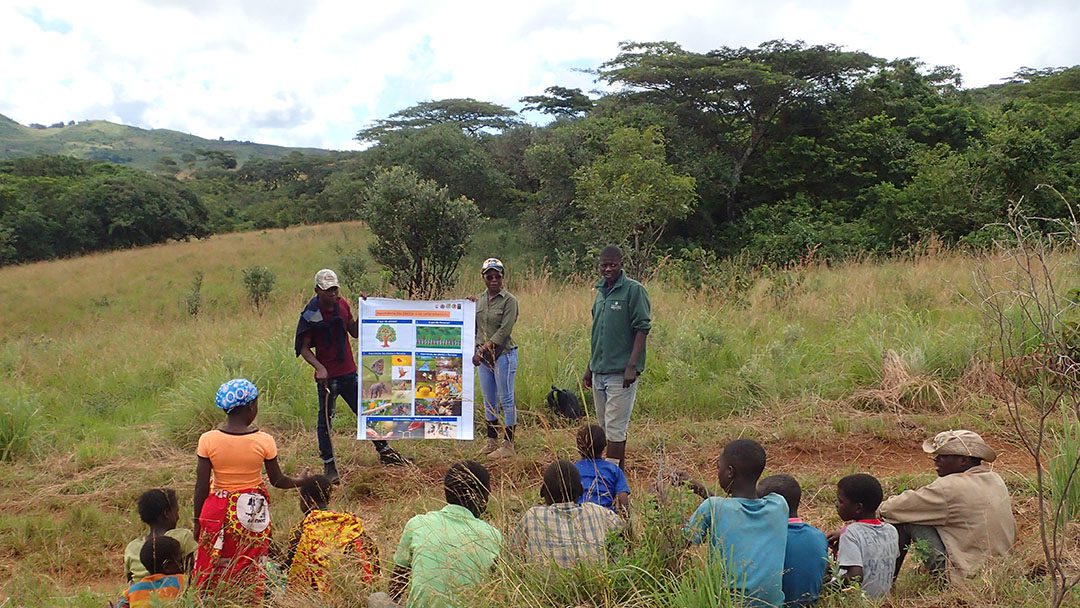
Reforestation Project – Photographer – Norina Vicente
Trophic Interactions Research
Most of the planet’s macrodiversity is comprised of plants and the insects that feed upon them—these two groups account for almost 60% of described species. Understanding plant-insect interactions motivates thousands of ecological studies, and natural history data on herbivore life cycles and diets are the basis of this research. We are therefore steadily collecting and rearing caterpillars and registering data about their host plants. This allows to document the full life cycles of these abundant herbivores, as the immature stages (caterpillars) of many moths and butterflies are still unknown. It also allows us to understand herbivore diet breadth and even tritrophic interactions as we often rear parasitoid wasps and flies from our caterpillars. This project helps us understand the incredible diversity of interactions in Gorongosa.
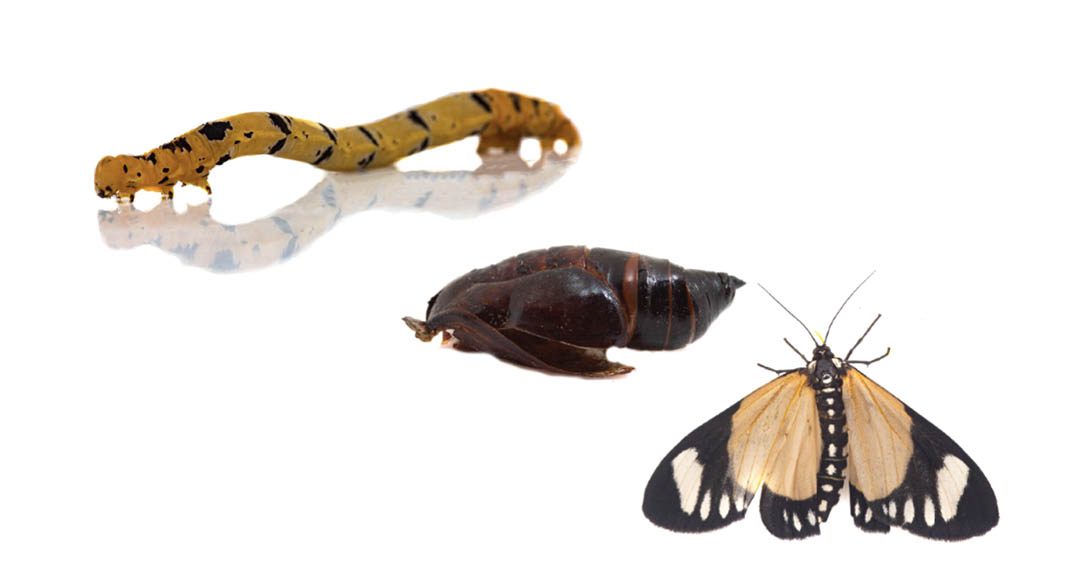
Trophic Interactions Monitering, Gorongosa National Park Mozambique – Photographer Norina Vicente
Serval Ecology
The serval (Leptailurus serval) is a medium-sized cat species native to sub-Saharan Africa with a broad distribution across the continent. Currently, information regarding intraguild interactions between African mesopredators like the serval and large mammalian apex predators is very scarce. This project aims to understand how the serval coexists with sympatric large mammalian apex predators, by studying both proactive and reactive avoidance behaviors. We have been deploying modified camera traps in Gorongosa to conduct behavioral experiments using large predator sounds. We also plan to capture and collar servals in the Park to understand their movements and habitat use and how their habitat selection may be affected by the presence of a growing community of large carnivores.
Our Mission
Our Mission
Advance an integrated multi-partner approach to conservation and to people-centred development. The Gorongosa Project protects the Park’s biodiversity and ecosystem services and unlocks its economic potential for the community inhabitants of the Gorongosa Buffer Zone, Sofala Province, Mozambique and further afield.
Our Vision
A thriving, biodiversity-rich, Greater Gorongosa conservation landscape, which supports Sofala Province as an engine for resilient and sustainable development enabling nature experiences and wellbeing for its people, enriching all of Mozambique and the world.
A Park for Peace
On 1 August, 2019 a historic ceremony was held in Gorongosa to celebrate the Cessation of Hostilities Accord between the leaders of the Government of Mozambique and the opposition Renamo Party. The accord established Gorongosa National Park (GNP) as a ‘Park for Peace’, delivering human development to the communities that share the greater landscape.
Ethics and Compliance
The Ethics and Compliance e-mail is a reporting mechanism that facilitates reporting of possible illegal, unethical, or improper conduct from staff, suppliers and stakeholders. The e-mail is Ethics@gorongosa.net